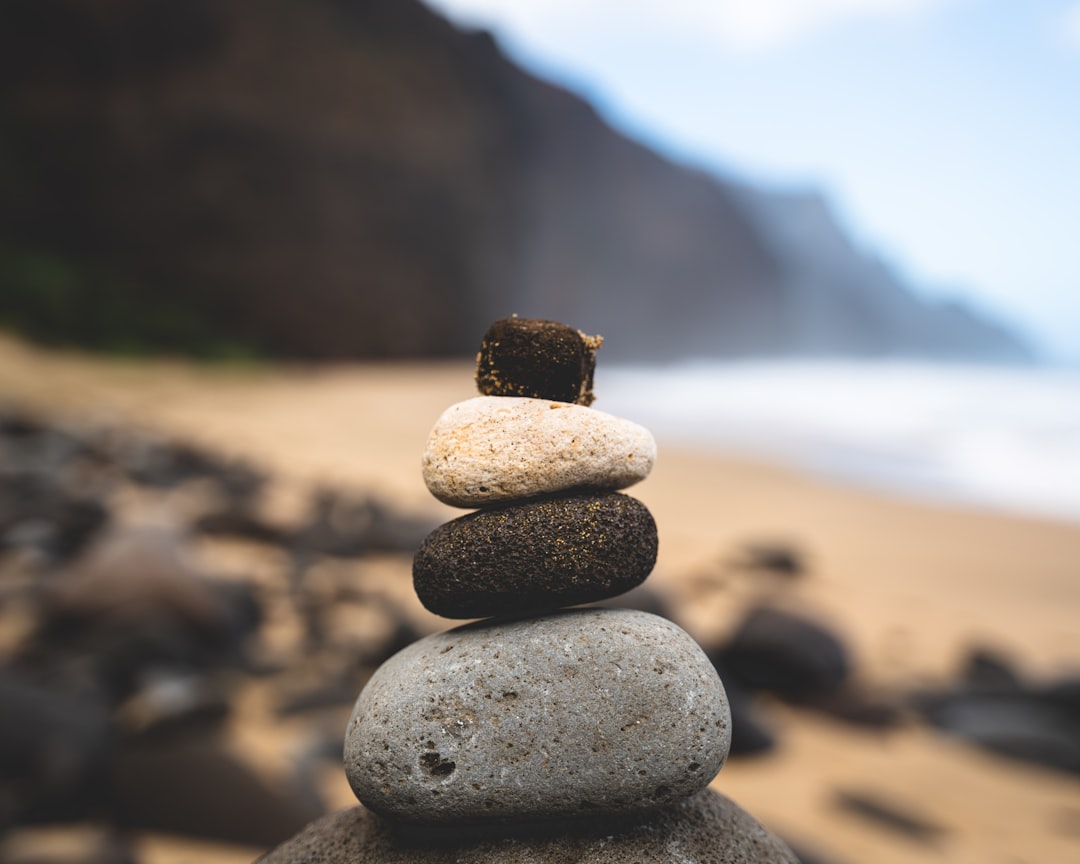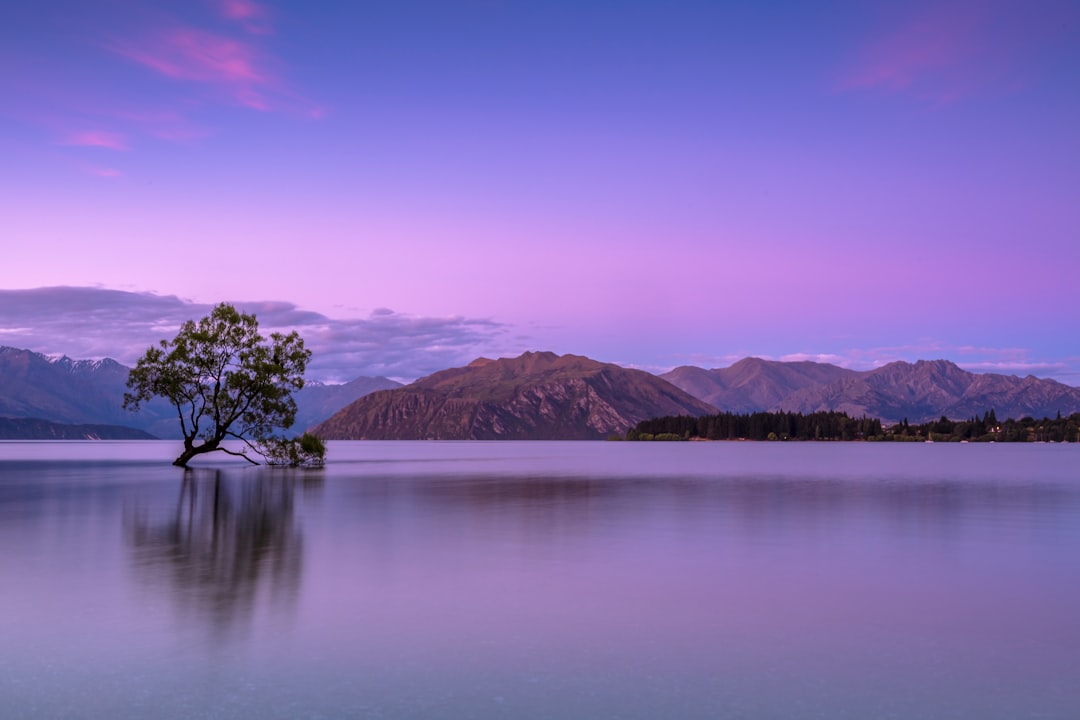Transform Your Living Room Into a Lush Oasis: The Power of Plants!
Transform Your Living Room Into a Lush Oasis: The Power of Plants!
1. Welcome to the green revolution: Transform Your Living Room Into a Lush Oasis!
Imagine coming home to a living room filled with lush greenery, vibrant flowers, and a sense of calm and tranquility. It may sound like a dream, but it is entirely possible to transform your living space into a lush oasis with the power of plants. Plants not only add beauty and aesthetic appeal to any room, but they also have numerous health benefits, such as purifying the air, reducing stress, and boosting mood and productivity. Whether you have a green thumb or not, this blog will guide you through the process of creating your own indoor garden and turning your living room into a thriving sanctuary.

2. The incredible power of plants: Why bringing nature indoors can positively impact your home and well-being.
Plants have a remarkable ability to enhance our well-being and improve the overall atmosphere of our living spaces. By bringing nature indoors, we can create a positive impact on our homes and uplift our spirits. The incredible power of plants goes beyond mere aesthetics, as they offer a multitude of benefits that contribute to our physical and mental well-being.
One of the most significant advantages of having indoor plants is their ability to purify the air. Plants absorb carbon dioxide and release oxygen through the process of photosynthesis. This natural air filtration system improves the air quality in our homes by removing toxins and harmful pollutants. Not only does this result in a cleaner and healthier environment, but it also reduces the risk of respiratory problems and allergies. Research has also shown that indoor plants can increase humidity levels, which helps to alleviate dry skin, coughs, and sore throats.
In addition to improving air quality, plants have a profound impact on our mental well-being. It is no secret that spending time in nature can have a calming and rejuvenating effect on our minds. By incorporating plants into our living rooms, we can recreate a sense of tranquility and bring a touch of the outdoors inside. The presence of greenery has been shown to reduce stress, anxiety, and fatigue, promoting a sense of calmness and relaxation. The colors and textures of plants can also have a visually pleasing effect, creating a peaceful and harmonious ambiance.
Furthermore, plants have been linked to increased productivity and concentration. Studies have shown that the presence of indoor plants in workspaces and study areas can enhance cognitive function and focus. The visual stimulation provided by plants can help to reduce mental fatigue, improve memory retention, and boost creativity. By transforming our living rooms into lush oases filled with plants, we create an environment that promotes productivity and enhances our ability to concentrate on tasks.
Taking care of indoor plants can also provide a sense of satisfaction and fulfillment. Nurturing and watching plants grow can be a rewarding experience that brings joy and a sense of accomplishment. It encourages us to slow down, be mindful, and connect with nature on a deeper level. The act of tending to plants can serve as a form of therapy, promoting mindfulness and reducing stress.
In conclusion, bringing nature indoors through the power of plants can have a profound impact on our homes and well-being. The air-purifying qualities, calming effects, and productivity-boosting benefits of indoor plants make them an essential addition to any living room. By creating a lush oasis filled with greenery, we can transform our living spaces into sanctuaries that promote health, happiness, and a deeper connection with nature.

3. Bringing the outdoors in: How to choose the perfect plants for your living room based on lighting, space, and maintenance.
Choosing the right plants for your living room is essential to create a lush oasis that enhances the overall atmosphere of your space. When selecting indoor plants, it's important to consider factors such as lighting, space, and maintenance requirements. Here are some tips to help you choose the perfect plants for your living room:
1. Lighting: Different plants have varying light requirements. Before selecting indoor plants, observe the natural lighting in your living room. Is it bright and sunny, or does it have limited natural light? Based on the lighting conditions, you can choose plants that thrive in low light, moderate light, or bright light.
- Low-light plants: If your living room has limited natural light, opt for plants that thrive in low light conditions. Examples include snake plants, pothos, and ZZ plants. These plants are known for their ability to tolerate low light and can add greenery to darker corners of your space.
- Moderate-light plants: If your living room receives moderate natural light, you have more options when it comes to plant selection. Consider plants like peace lilies, spider plants, or philodendrons. These plants can tolerate and thrive in moderate light conditions.
- Bright-light plants: If your living room is flooded with natural light, you can choose plants that require bright light. Examples include succulents, cacti, or rubber plants. These plants love sunlight and can thrive in bright, sunny spaces.
2. Space: Consider the available space in your living room when choosing indoor plants. Some plants can grow tall and wide, while others remain small and compact. If you have limited space, opt for compact plants such as pothos, spider plants, or small ferns. These plants can be easily placed on shelves, tabletops, or hanging baskets, minimizing the need for additional floor space.
3. Maintenance: Assess your ability to care for plants and choose ones that align with your maintenance capabilities. Some plants require more frequent watering, while others can tolerate less frequent watering. Consider factors such as watering frequency, humidity requirements, and pruning needs when making your selection. Low-maintenance plants like succulents, snake plants, or ZZ plants are excellent choices for those who have a busy lifestyle or are new to plant care.
Additionally, it's essential to consider the potential toxicity of plants, especially if you have pets or young children. Some plants may be harmful if ingested, so research the toxicity of any plant you bring into your living room and ensure it's safe for your household.
By taking into account lighting, space, and maintenance requirements, you can choose the perfect plants for your living room. Remember, indoor plants not only add beauty and visual appeal to your space but also provide numerous benefits for your well-being. So, go ahead and transform your living room into a lush oasis with plants that suit your style and needs.

4. Transforming your space: Simple tips and tricks to turn your living room into a vibrant oasis of greenery.
Transforming your living room into a vibrant oasis of greenery is a fantastic way to add life and beauty to your space. With the right plants and some simple tips and tricks, you can create a lush and inviting atmosphere. Here are some suggestions to help you get started:
1. Create a focal point: Choose a statement plant that will be the centerpiece of your living room. Consider a large, leafy plant such as a fiddle-leaf fig or a monstera deliciosa. Place it in a prominent spot, such as near a window or in an empty corner, to draw attention and create a visual anchor for the space.
2. Mix and match plant sizes: Play with different plant sizes to add depth and visual interest to your living room. Combine tall plants like palms or bamboo with medium-sized plants such as pothos or snake plants, and add smaller plants like succulents or air plants for variety. This layering effect will give your space a dynamic and lush look.
3. Use different plant varieties: Experiment with different plant types to add texture and diversity to your living room. Incorporate plants with various leaf shapes, sizes, and colors to create an eclectic and visually appealing display. Consider plants with colorful foliage, such as calatheas or crotons, to add a pop of color to your space.
4. Hang plants for vertical interest: Utilize wall space by hanging plants in macramé planters or wall-mounted plant holders. This not only adds greenery to higher levels but also adds a unique focal point to your living room. Choose trailing plants like pothos or string of pearls for a cascading effect or opt for statement plants like hoyas or spider plants for a bold and eye-catching look.
5. Incorporate plant stands and shelves: Invest in plant stands or shelves to create height and display your plants in an organized and aesthetically pleasing way. Use different levels to showcase a variety of plants, allowing each one to shine. Consider using shelves near windows to take advantage of natural light and create a mini indoor garden.
6. Group plants together: Grouping plants together in clusters can create a lush and cohesive look. Place plants with similar care requirements and aesthetics in close proximity, creating a mini garden within your living room. This also helps create a microclimate that can increase humidity levels, benefiting your plants' overall health.
7. Add decorative elements: Enhance the visual appeal of your living room oasis by incorporating decorative elements such as colorful plant pots, decorative planters, or plant hangers. Choose pots in different materials, colors, and patterns to add style and personality to your space. Mix and match pots of varying sizes for added interest.
Remember to consider the specific care requirements of each plant and place them accordingly in terms of light, temperature, and humidity. Regularly maintain and care for your plants by watering, fertilizing, and dusting their leaves to keep them healthy and thriving.
By following these simple tips and tricks, you can transform your living room into a vibrant oasis of greenery that brings joy and tranquility to your space. Enjoy the benefits of indoor plants while creating a visually stunning and refreshing environment for relaxation and rejuvenation.

5. Nurturing plant care: A beginner's guide to keeping your beloved green companions healthy and thriving.
Nurturing plant care is essential to ensure that your beloved green companions stay healthy and thriving. Whether you are a beginner or have some experience with indoor plants, following a few basic guidelines will help you maintain the well-being of your plants. Here is a beginner's guide to keeping your plants healthy and thriving:
1. Understand the specific care requirements: Different plants have different needs when it comes to light, temperature, humidity, watering, and fertilizing. It is crucial to familiarize yourself with the specific care requirements of each plant in your living room oasis. Read the care instructions that come with your plants or research online to ensure that you provide the optimal conditions for their growth.
2. Water properly: Proper watering is essential for plant health. Overwatering can lead to root rot, while underwatering can cause wilting and dehydration. Before watering your plants, check the moisture level of the soil by sticking your finger about an inch deep into the soil. If it feels dry, it's time to water. Ensure that the water drains properly, as excess water can lead to waterlogging. Remember that different plants have different water requirements, so adjust your watering schedule accordingly.
3. Provide adequate light: Light is one of the fundamental requirements for plant growth. Most indoor plants thrive in bright, indirect light. Place your plants near windows where they can receive sufficient light without direct exposure to harsh sunlight, which can scorch their leaves. If your living room does not receive enough natural light, consider using artificial grow lights to supplement the light requirements of your plants.
4. Maintain appropriate humidity levels: Indoor environments can be dry, especially during winter when heating systems are in use. Some plants, such as tropical varieties, prefer higher humidity levels. To increase humidity, you can place a humidifier near your plants or use methods like misting their leaves with water or placing a tray of water near them. Alternatively, grouping plants together can create a microclimate with higher humidity levels.
5. Monitor and control temperature: Most indoor plants thrive in temperatures between 65-85°F (18-29°C). Avoid placing plants in drafty areas or near heating or cooling vents, as extreme temperature fluctuations can stress the plants. Regularly check the temperature of your living room and ensure that it stays within the suitable range for your plants' health.
6. Regularly clean and dust plants: Dust can accumulate on the leaves of plants, restricting their ability to photosynthesize and breathe. Wipe the leaves gently with a damp cloth or use a soft brush to remove dust and keep the foliage clean. This will not only enhance the plant's appearance but also improve its overall health.
7. Prune and trim as needed: Pruning is essential to maintain the shape and size of your plants. Regularly trim away dead or yellowing leaves to promote healthy growth. Additionally, prune any leggy or overgrown stems to encourage bushier growth. Use clean and sharp pruning tools to avoid damaging the plants.
8. Monitor for pests and diseases: Keep an eye out for common pests such as aphids, spider mites, or mealybugs. Inspect your plants regularly and take immediate action if you notice any signs of pests or diseases, such as yellowing leaves, sticky residue, or webbing. Treat affected plants with appropriate organic or chemical remedies to prevent further damage.
9. Feed your plants: Indoor plants may require regular fertilization to ensure proper nutrition. Choose a suitable organic or balanced liquid fertilizer and follow the instructions for application. Avoid overfertilizing, as it can lead to nutrient burn and damage the roots. Generally, plants should be fed during their active growing season, typically in spring and summer.
10. Regularly rotate your plants: To ensure even growth and prevent lopsidedness, rotate your plants every two to four weeks. This helps all sides of the plant receive adequate sunlight, promoting balanced growth.
Remember that each plant is unique, and it may take some time and experimentation to find the perfect care routine for your specific plants. Regular observation, care, and adjustments will enable you to create a nurturing environment for your beloved green companions, resulting in a vibrant and thriving living room oasis.

6. The benefits go beyond aesthetics: Discover the surprising ways that indoor plants can improve your mental and physical health.
6. The Benefits of Indoor Plants for Mental and Physical Health
Indoor plants not only add beauty and lushness to your living room, but they also offer a wide range of surprising benefits for your mental and physical health. Here are some ways that indoor plants can improve your overall well-being:
1. Air purification: Plants are natural air purifiers. They absorb carbon dioxide and release oxygen through the process of photosynthesis. Additionally, some plant species can absorb indoor air pollutants such as volatile organic compounds (VOCs) and formaldehyde. By introducing indoor plants into your living room, you can improve the air quality and reduce the presence of harmful substances in the environment, leading to better respiratory health.
2. Stress reduction: Adding greenery to your living space can help reduce stress and promote relaxation. Research has shown that spending time around plants can lower blood pressure, reduce stress levels, and improve mood. The presence of indoor plants in your living room creates a calming and soothing atmosphere, which can have a positive impact on your mental well-being.
3. Increased productivity and focus: Indoor plants have been found to enhance productivity and concentration. Studies have shown that having plants in the office or workspace can boost cognitive function, attention span, and overall work performance. By incorporating plants into your living room, you can create a conducive environment for work or study, improving your focus and productivity.
atOptions = { 'key' : '7dfff831afb452acd53e10ae1be2bacc', 'format' : 'iframe', 'height' : 60, 'width' : 468, 'params' : {} }; document.write('
4. Improved mental health: Indoor plants have a positive effect on mental health. They can help reduce symptoms of anxiety, depression, and fatigue. The presence of greenery and the act of nurturing and caring for plants can provide a sense of purpose and responsibility, boosting self-esteem and feelings of happiness. Plants also create a visually appealing and calming environment, which can contribute to mental well-being.
5. Better sleep quality: Certain indoor plants, such as lavender and jasmine, emit soothing scents that can promote relaxation and better sleep quality. These plants have natural calming properties and can help reduce anxiety and insomnia. Placing these plants in your living room can create a tranquil atmosphere that facilitates a good night's sleep.
6. Natural humidifiers: Many indoor plants release moisture into the air through a process called transpiration. This can help increase humidity in dry indoor environments, which is especially beneficial during winter or in regions with low humidity. Adequate humidity levels can prevent dry skin, respiratory issues, and allergies, enhancing your overall physical well-being.
7. Noise reduction: Some indoor plants have the ability to absorb and dampen sound, reducing noise pollution in your living room. This can be particularly beneficial if you live in a noisy neighborhood or near a busy street. Plants with large, dense leaves or those that have thick stems and trunks are known to be effective at absorbing sound waves and creating a quieter environment.
8. Faster recovery from illness: Several studies have shown that exposure to nature or natural elements, such as indoor plants, can promote faster recovery from illness or surgery. The presence of indoor plants in your living room creates a healing and nurturing environment, which can positively impact your recovery process.
Incorporating indoor plants into your living room goes beyond aesthetics. The numerous mental and physical health benefits they offer make them invaluable additions to your home. By taking care of your plants and creating an environment that promotes their growth, you can enjoy a healthier and more vibrant living space.

7. Creating a sustainable paradise: Exploring eco-friendly practices and plant choices to lessen your carbon footprint.
7. Creating a Sustainable Paradise: Exploring Eco-Friendly Practices and Plant Choices to Lessen Your Carbon Footprint
In addition to the numerous mental and physical health benefits, indoor plants also have the power to create a sustainable paradise within your living room. By adopting eco-friendly practices and carefully selecting your plant choices, you can minimize your carbon footprint and contribute to a greener future. Here are some key ways you can incorporate sustainability into your indoor plant oasis:
1. Choose Native or Low-Maintenance Plants: Opting for native plant species or those that require minimal care can have a significant impact on sustainability. Native plants are adapted to the local climate and soil conditions, reducing the need for excessive watering, fertilizers, and pesticides. Additionally, low-maintenance plants can thrive with limited resources, making them a more sustainable choice.
2. Embrace Organic and Natural Pest Control: Instead of relying on chemical pesticides and insecticides, explore natural and organic pest control methods. This can include introducing beneficial insects, such as ladybugs or lacewings, which prey on common plant pests. You can also make your own organic pest control solutions using ingredients like neem oil or soapy water.
3. Practice Water Conservation: Conserving water is crucial for sustainability. Implementing water-saving techniques, such as collecting rainwater or using a drip irrigation system, can minimize water waste and ensure your plants receive adequate hydration without excessive consumption. Additionally, choosing plants that are drought-tolerant or have lower water requirements can further reduce your water usage.
4. Recycle and Upcycle: Get creative with your plant containers and decoration choices by using recycled or upcycled materials. Repurpose old containers, jars, or bottles to create unique and sustainable plant pots. You can also explore DIY projects, such as creating a vertical garden using recycled materials or repurposing old furniture as plant stands. By giving new life to discarded items, you reduce waste and contribute to a more sustainable living space.
5. Compost Organic Waste: Instead of throwing away kitchen scraps or organic waste, start composting. Composting not only reduces the amount of waste going into landfills but also produces nutrient-rich compost that can benefit your indoor plants. Consider setting up a small compost bin or worm farm to turn your kitchen scraps into valuable organic fertilizer.
6. Opt for Sustainable Planters and Fertilizers: When purchasing planters or fertilizers, prioritize sustainable options. Choose planters made from eco-friendly materials such as bamboo, clay, or recycled plastics. Avoid products containing harmful chemicals or additives that can pollute the environment. Look for organic and natural fertilizers that are derived from renewable resources and have minimal environmental impact.
7. Support Local Nurseries: Instead of purchasing plants from distant suppliers, support local nurseries. Buying from local sources reduces transportation emissions and supports the local economy. Local nurseries often offer a variety of native plant species that are well-suited to the local climate, promoting biodiversity and sustainability.
By embracing these eco-friendly practices and making sustainable plant choices, you can transform your living room into a lush oasis that not only enhances your well-being but also contributes to a healthier planet. Every small step towards sustainability counts, and your indoor plant paradise can be a beacon of environmental consciousness and inspiration for others to follow.

8. The ripple effect: How your green living room can inspire others to embrace the beauty and benefits of plants.
8. The Ripple Effect: How Your Green Living Room Can Inspire Others to Embrace the Beauty and Benefits of Plants
Creating a lush oasis in your living room goes beyond personal enjoyment and environmental consciousness. It has the power to inspire and ignite a ripple effect in others, encouraging them to embrace the beauty and benefits of plants in their own spaces. Here's how your green living room can make a positive impact on those around you:
1. Visual Delight: A vibrant and well-maintained green living room is visually appealing and instantly catches the attention of anyone who enters your space. The sight of lush, healthy plants can create a sense of awe and wonder, captivating the imagination and sparking curiosity in those who see it. Your living room becomes a living testament to the beauty and elegance that plants bring to any environment.
2. Health and Well-being: Numerous studies have shown the positive impact of indoor plants on human health and well-being. By sharing your green living room with others, you are also sharing the benefits that come with it. The presence of plants can improve air quality, reduce stress levels, boost creativity, and enhance overall mood and productivity. When friends, family, or guests experience these benefits firsthand, they may be inspired to bring plants into their own homes to enjoy the same advantages.
3. Learning Opportunity: Your green living room can serve as an educational space, providing valuable insights and knowledge about plants and their care. Guests may be curious to learn more about the different types of plants you have, their specific care requirements, and the benefits they offer. By sharing your expertise and experiences, you can encourage others to explore the world of plants and develop their own green thumbs.
4. Emotional Connection: Plants have the unique ability to evoke emotions and create a sense of connection with nature. When guests interact with your green living room, they may experience a deep connection with the environment and a desire to bring nature into their own living spaces. This emotional connection can be a powerful motivator for individuals to begin their own journey with plants and create their own green sanctuaries.
5. Environmental Awareness: A sustainable and eco-friendly living room demonstrates your commitment to reducing your carbon footprint and making positive choices for the environment. By showcasing sustainable practices such as using recycled materials, conserving water, and embracing organic pest control, you inspire others to adopt similar practices in their own lives. Your green living room becomes a symbol of environmental consciousness and a catalyst for change.
6. Community Engagement: Sharing your green living room can foster a sense of community engagement and connection. By inviting others to experience the beauty of your space and engaging in conversations about plants and sustainability, you create opportunities for collaboration and shared learning. This sense of community can extend beyond your immediate circle, inspiring others in your community to embrace the transformative power of plants and create their own green havens.
With each person you inspire through your green living room, the ripple effect continues to spread. What began as a personal endeavor evolves into a movement towards a greener, more sustainable future. By embracing the beauty and benefits of plants in your living room, you become a catalyst for change and inspire others to embark on their own green journeys. Together, we can create a world where every living space is a flourishing oasis of beauty, health, and environmental consciousness.

9. Let nature take center stage: Embrace the tranquility and serenity that your lush oasis can bring into your life.
9. Let Nature Take Center Stage: Embrace the Tranquility and Serenity That Your Lush Oasis Can Bring Into Your Life
Creating a green living room goes beyond aesthetics and environmental benefits – it has the power to transform your daily life and bring a sense of tranquility and serenity into your space. By embracing nature and incorporating plants into your living room, you can experience a multitude of positive impacts on your well-being and overall quality of life. Here's how your lush oasis can enhance your daily life:
1. Natural Stress Relief: In today's fast-paced world, stress has become a common companion. However, by surrounding yourself with nature in your living room, you can create a peaceful sanctuary where you can escape from the pressures of everyday life. The presence of plants has been proven to reduce stress levels, lower blood pressure, and promote relaxation. Whether it's a calm corner filled with potted plants or a verdant wall of cascading greenery, the soothing qualities of nature can create an oasis for your mind, body, and soul.
2. Enhanced Air Quality: Indoor air pollution is a significant concern, with common household items and pollutants contributing to respiratory issues and poor indoor air quality. Plants act as natural air purifiers, absorbing toxins and releasing fresh oxygen into the environment. By introducing a variety of plants into your living room, you can improve the air quality and create a healthier space for you and your loved ones. Breathing in cleaner air can boost your immune system, improve sleep quality, and promote overall respiratory health.
3. Increased Productivity and Creativity: When surrounded by nature, your mind is rejuvenated, and your creativity is stimulated. Research has shown that incorporating plants into workspaces and living areas can enhance productivity, focus, and creativity. Whether you're working from home, studying, or engaging in hobbies, having a green living room can provide the ideal environment to unlock your full potential and find inspiration. The presence of plants can help clear your mind, improve concentration, and spark imaginative thinking.
4. Connection with the Natural World: As humans, we have an innate connection to the natural world. By bringing nature indoors, we can reconnect with this primal connection and cultivate a deeper appreciation for the beauty and wonders of the earth. Your green living room serves as a constant reminder of the cyclical nature of life, growth, and renewal. Observing the delicate leaves unfurling, the vibrant colors blooming, and the intricate patterns of each plant can instill a sense of wonder and grounding in your daily life.
5. Mindful Living and Well-being: Embracing a green living room encourages a shift towards a more mindful way of living. Taking care of plants requires attention, patience, and nurturing – qualities that can be applied to our own self-care and well-being. By tending to your plants, practicing mindful watering, and observing their growth, you cultivate a deeper connection with yourself and the natural world. This mindful living can extend beyond your living room and into other areas of your life, fostering a greater sense of balance, gratitude, and overall well-being.
6. Personal Sanctuary and Retreat: Your green living room can become your personal sanctuary and retreat, a space where you can escape the noise and chaos of the outside world. Whether you choose to lounge amidst a collection of lush foliage or sit quietly by a tranquil water feature, your living room can transform into a haven of peace and respite. Nature offers us a respite from the demands of modern life, allowing us to recharge, reflect, and reconnect with ourselves.
Embracing the tranquility and serenity that your lush oasis brings into your life allows you to create a space that nurtures and supports your well-being. By bringing nature into your living room, you can experience the countless benefits that plants offer, from stress relief and improved air quality to increased productivity and a deeper connection with the natural world. Let your living room be a testament to the power of nature and the transformative impact it can have on your daily life.

10. Conclusion: Together, let's harness the power of plants and transform our living rooms into vibrant, rejuvenating spaces.
Conclusion: Together, Let's Harness the Power of Plants and Transform Our Living Rooms into Vibrant, Rejuvenating Spaces
In conclusion, the power of plants to transform our living rooms goes beyond mere aesthetics. By embracing nature and incorporating plants into our living spaces, we can experience a multitude of benefits that enhance our daily lives.
Firstly, plants provide natural stress relief, creating a peaceful sanctuary where we can escape the pressures of everyday life. The presence of plants has been proven to reduce stress levels, lower blood pressure, and promote relaxation. Creating a calm corner filled with potted plants or a verdant wall of cascading greenery can truly create an oasis for our minds, bodies, and souls.
Secondly, incorporating plants into our living rooms improves air quality by acting as natural air purifiers. Indoor air pollution is a significant concern, but plants absorb toxins and release fresh oxygen, resulting in a healthier environment for ourselves and our loved ones. Breathing in cleaner air boosts our immune systems, improves sleep quality, and promotes overall respiratory health.
Furthermore, having a green living room can increase productivity and creativity. Research has shown that being surrounded by nature enhances focus and stimulates imaginative thinking. Whether we're working from home, studying, or pursuing hobbies, having a green living room provides the ideal environment to unlock our full potential and find inspiration.
Moreover, bringing nature indoors allows us to reconnect with our primal connection to the natural world and cultivate a deeper appreciation for its beauty. Observing the growth and intricate patterns of each plant instills a sense of wonder and grounding in our daily lives.
Embracing a green living room also encourages a shift towards a more mindful way of living. Taking care of plants requires attention, patience, and nurturing, which can be applied to our own self-care and well-being. By tending to our plants mindfully, we cultivate a deeper connection with ourselves and the natural world, fostering a greater sense of balance, gratitude, and overall well-being.
Lastly, our green living rooms can become our personal sanctuaries and retreats, providing a space where we can escape the noise and chaos of the outside world. Whether we choose to lounge amidst a collection of lush foliage or sit quietly by a tranquil water feature, our living rooms can transform into havens of peace and respite.
In conclusion, let's harness the power of plants and transform our living rooms into vibrant, rejuvenating spaces. By bringing nature indoors, we can experience the countless benefits that plants offer, from stress relief and improved air quality to increased productivity and a deeper connection with the natural world. Let our living rooms be testaments to the power of nature and the transformative impact it can have on our daily lives. Together, let's create spaces that nurture and support our well-being.


.png)




Post a Comment